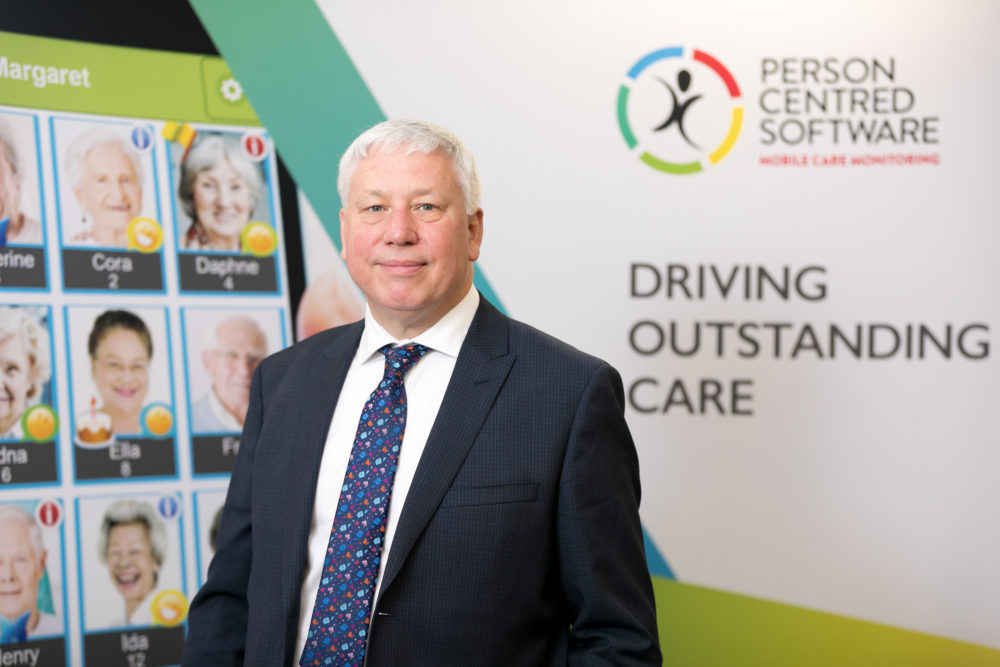Social care workers have a demanding job – and that’s before they’ve even looked at the day’s paperwork.
Jonathan Papworth and his brother Simon wanted to set up software that saves carers time and allows them to report what happens on their shifts more accurately.
We catch up with Jonathan to find out more about his business and the Mobile Care Monitoring system.
How did Person Centred Software come about and what is its USP?
After selling our previous electronic care system, my brother (Simon) and I founded Person Centred Software. We started it on the basis that there was no mobile electronic evidence of care systems on the market that works for carers.
Our system, Mobile Care Monitoring, was the first and – in many respects – is still the only fully mobile, easy to use, fit for purpose evidence of care system for residential social care.
The icon-based interface of Mobile Care Monitoring was born out of our aim to create a system which anyone can use. Everyone was thinking that to go digital, a computer was the answer. However, our system takes people working in care homes from using paper to evidencing care using a mobile digital system.
We knew that carers don’t sit at a desk using a desktop computer, so we made a system that works for 100% of the people using it, including all ages and those who don’t speak English as a first language.
As a result, the system saves every carer an hour per shift, which was previously spent on paperwork. This time, which equates to saving three days a month each on paperwork, is spent with residents – leading to happier residents that receive a higher quality of care.
“The system saves every carer an hour per shift, which was previously spent on paperwork”
Carers can now capture holistic care, not just the critical care tasks like they did before on paper, so care homes have an insight into every person’s care and wellbeing.
It’s hard to remember everything you did at the end of the shift. But by evidencing care on the go, you can capture the little things like the cup of tea, the sit down for a chat, reading a prayer when someone’s feeling anxious.
As detailed information is captured in real-time, outcomes can be measured, such as ensuring that everyone has received the optimum level of fluids during the last 24 hours; or trend analysis into the frequency and location of falls. This is something no other system does and we help care homes to drive outstanding care.
The system launched in 2013 and, as of January 2019, 1,000 care homes in the UK are using the software daily to evidence care and for electronic care planning.
What is your background in frontline care?
I have virtually no background in frontline care. I began my career as a junior programmer and was commissioned to develop a service user billing system in the early 90s. This went on to become the electronic care planning system Caresys, which we sold in 2010.
I am a business analyst by training so I can look at a problem and work out innovative ways to solve it. Not replicating past working practices was critical when creating Mobile Care Monitoring. It was necessary to take a step back and look at the problem from afar to find new ways to solve the issue.
Once we had developed our ideas into a prototype system, we took it to several nurses and carers and asked them to use it. We honed the design with their feedback and continue to advance the system with our customers’ input and knowledge.
What challenges did you have in setting up the business?
The biggest challenge was knowing whether the idea we had would work. When we had created the initial version of Mobile Care Monitoring it was so radically different to how anyone else evidenced care that we didn’t know whether it would catch on.
“The biggest challenge was knowing whether the idea we had would work”
Fortunately, we didn’t have any other diversions – this created the space to look outside the box, gather feedback and try different ideas.
How did you secure funding?
Initially we went to business angels and venture capital funds to seek funding to enable faster growth at the outset, but this took so much time that the business was up and running before any external funding was secured. Now it’s unnecessary.
Simon and I created the business and the product without any cost to the company, and we were quite canny in managing our costs in the early years.
What are your goals as a business over the next five years? Do you have further expansion plans beyond Australia and New Zealand?
Our initial goal remains, which is to see digital transformation in social care. We hope other software providers will join us on this journey, but we expect to remain one of the primary organisations leading this.
We are also expanding the product’s functionality, particularly in terms of integration with systems, and we expect to have data flowing seamlessly between social care and the NHS and other care providers within five years.
We launched the company in Australia and New Zealand in 2018. They have many similarities with our own care organisations and so far, nine care homes are using our system with a further ten in the pipeline for implementation by Easter 2019.
In terms of other territories, we have looked at America but are not convinced their social care matches ours well enough, so the next steps are looking to mainland Europe, but there is a lot of work to create a multi-lingual product.





